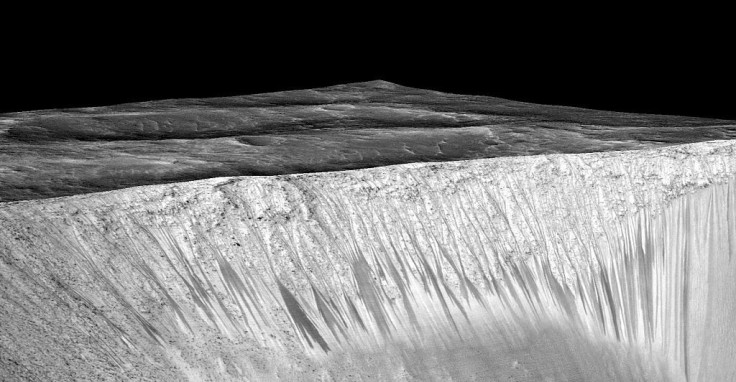‘Life On Mars’ Experiments Determine How Humans Can Survive In Red Planet

Living on the surface of Mars is considered impossible, thanks to extreme temperatures and dangerous UV radiation levels. But a group of scientists believe that humans can actually survive the Martian environment and will start simulating on how to live on the red planet.
According to a report, six Israeli astronauts will occupy a “Mars biodome,” a specially constructed habitat that aims to mimic what it would be like to live in the Red Planet. The Mars habitat is found within a desolate area of southern Israel, near the 200-million-year-old Ramon Crater. The crater, which was formed due to erosion, mirrors the various challenging terrains of the Red Planet.
The report also said that the area surrounding the biodome shows similarities to the Martian environment in terms of geology, aridity and isolation.
"It's a very big step forward in exploring how we can survive on another planet," Hadas Nevenzal said.
Nevenzal, who's getting her Ph.D. in biotechnology at Bar-Ilan University, is helping with the mission called the D-Mars project.
During the mission, the astronauts or Ramonauts (after Israeli astronaut Ilan Ramon) will be locked inside the dome for 11 days. They will conduct studies and do everyday tasks the way they would if they were living on Mars. This includes conducting experiments outside the Mars dome while wearing a space suit.
This is not the first time that scientists participated in the D-Mars project. Last year, three astronauts already participated and the experience was proven to be highly useful for research that other space agencies are also looking at the Israeli biodome to conduct their own studies.
Doing research in places on Earth that resemble the Martian surface is not unheard of. Recently, an Earthbound NASA rover was used to dig for samples in Chile’s Atacama desert to give scientists an idea if Mars can support life.
In a study published in Frontiers in Microbiology, data gathered using a NASA rover deployed on an Earth surface that’s very similar to Mars support the theory that life could have existed on the Red Planet many years ago.
The study, conducted by the team of Kimberly Warren-Rhodes and the NASA Life in Atacama Project Team, has discovered microbes in the Atacama desert. The desert makeup is considered to be very similar to the Martian surface, and the findings supported the possibility that microbes could also survive on the Red Planet.
According to the study, Mars’ very harsh environment, which is constantly exposed to extreme temperatures and UV radiation, make it impossible for the planet to sustain life above ground. But if the microbes found beneath the Atacama desert are any indication, then life could survive beneath the surface.
Astronomy.com reported that the NASA rover found the samples of the microbes by digging two and one-half feet below the surface. Most Mars missions have concentrated on studying the surface of the planet and have only begun digging for more data recently. NASA’s Insight Lander has just launched a “mole” which dig an average of about 400 hammer blows in a span of four hours.
Rhodes’ study also pointed that data gathered about Mars in the last few decades show that early in its history, the Red Planet could have been habitable for microbial life and that energy sources like carbon, nutrients, and shelter were abundant.
Now new evidence also shows that surface and subsurface water could have existed or could still be around on Mars. These bodies of water are believed to have organic molecules needed to support life.
The studies further encourage the search for biosignatures which could help Martian missions such as Mars 2020 and the second part of ExoMars to discover signs of life on the Red Planet.
© Copyright IBTimes 2024. All rights reserved.




















